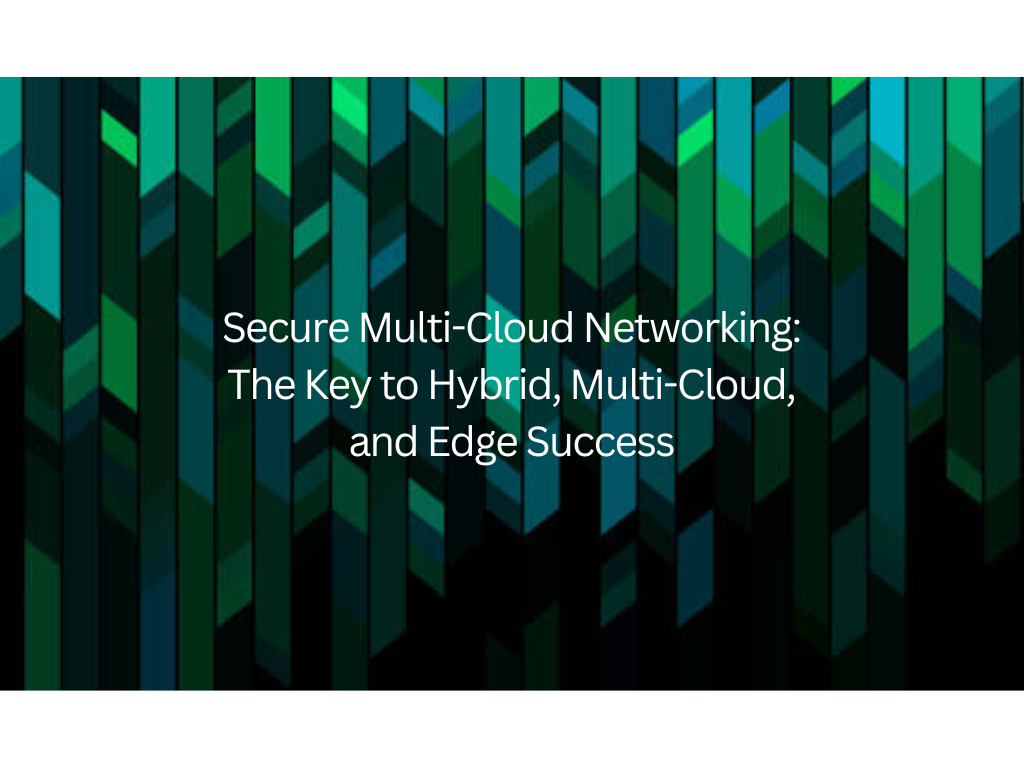As businesses increasingly adopt hybrid, multi-cloud, and edge computing strategies, the need for secure multi-cloud networking becomes more pressing. In this article, we’ll explore what secure multi-cloud networking is, why it’s essential for success in these environments, and some best practices for implementing it.
What is Secure Multi-Cloud Networking?
Secure multi-cloud networking refers to the set of technologies and practices used to connect multiple clouds and edge devices while maintaining the confidentiality, integrity, and availability of data and applications. It encompasses a variety of networking technologies, including virtual private networks (VPNs), software-defined networking (SDN), load balancing, and more.
Why is Secure Multi-Cloud Networking Essential?
There are several reasons why secure multi-cloud networking is essential for success in hybrid, multi-cloud, and edge environments:
- Increased Complexity: Managing multiple clouds and edge devices is inherently more complex than managing a single environment. Secure multi-cloud networking provides a framework for simplifying this complexity and ensuring that all the pieces of the puzzle work together seamlessly.
- Greater Security Risks: With more devices and more connections, there are more opportunities for security breaches. Secure multi-cloud networking provides the tools needed to mitigate these risks and ensure that data and applications are protected from unauthorized access.
- Improved Performance: By optimizing network traffic and reducing latency, secure multi-cloud networking can improve application performance and user experience.
- Better Cost Management: By leveraging multiple clouds and edge devices, organizations can reduce costs and improve efficiency. Secure multi-cloud networking provides the tools needed to optimize resource allocation and minimize waste.
Best Practices for Implementing Secure Multi-Cloud Networking
Implementing secure multi-cloud networking can be challenging, but there are several best practices that can help:
- Choose the Right Networking Technologies: There are a variety of networking technologies available for secure multi-cloud networking, and it’s important to choose the ones that are best suited to your environment. This may include VPNs, SDN, load balancing, and other technologies.
- Use Automation: Automating network configuration and management can help simplify the complexity of multi-cloud environments and ensure that configurations are consistent and up to date.
- Monitor Network Traffic: Monitoring network traffic can help identify potential security threats and performance issues before they become major problems.
- Implement Access Controls: Implementing access controls, such as firewalls and network segmentation, can help ensure that only authorized users and devices have access to sensitive data and applications.
- Use Cloud-Native Security Services: Many cloud providers offer native security services that can be used to enhance the security of multi-cloud environments. These services may include encryption, identity and access management, and more.
Conclusion
As businesses continue to adopt hybrid, multi-cloud, and edge computing strategies, the need for secure multi-cloud networking will only grow. By implementing best practices such as choosing the right networking technologies, using automation, monitoring network traffic, implementing access controls, and leveraging cloud native security services, organizations can ensure that their multi-cloud environments are secure, efficient, and optimized for performance.




